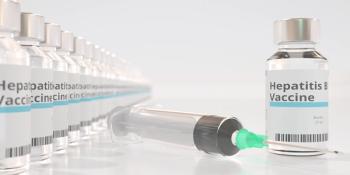
Why antitrust enforcement will matter to your practice in 2021 and beyond
There are some persuasive incentives for your practice to consider implementing or reviewing its antitrust compliance right now.
Every four years, like clockwork, law firms feel the urge to remind their clients that “a new sheriff is in town” and that renewed antitrust enforcement in any given industry will surely be afoot soon. This tendency of my fellow lawyers to warn of the government’s impending appetite for Sherman Act prosecutions is as predictable as it is often not borne out in reality, as the outgoing administration’s antitrust track record has proven. This year, however, may indeed be different – and so I add my tentative voice to the chorus, by leading with the punch line right off the bat: “Your practice group or CIN should probably consider conducting a comprehensive ‘antitrust physical’ of itself this spring!”
Undertaking regular compliance check-ups is as advisable, of course, as a patient’s routine annual blood panel – but with healthcare likely topping President Biden’s antitrust enforcement agenda (perhaps only paralleled in importance by its focus on “big tech”), it will be of particular relevance this year. Let me briefly explain in 5 bullet points why I believe this to be the case.
First, it is a given that the topic of “healthcare reform” sits atop the political and social-discourse agenda. One of the key tools the Biden administration has in its arsenal to achieve the desired changes – such as lowering costs, breaking up dominant players and preventing the further agglomeration of market power resulting from M&A deals, ensuring fairness in insurance and pharmaceutical pricing, and generally enhancing consumer access to healthcare across the country – will be its use of the antitrust laws (which are elsewhere more aptly named “competition laws”). Quite literally, the Sherman Act (and its little sibling, the Clayton Act) was made for achieving all of the examples given in the preceding sentence.
Second, it strongly appears that Mr. Biden and Ms. Harris will generally take a keener interest in strictly objective antitrust enforcement than Mr. Trump, under whom the DOJ’s merger enforcement was frequently considered to be merely a tool for achieving ulterior objectives that were politically expedient (the DOJ’s objection to the
Third, the healthcare sector lies at the intersection of several recent antitrust focus points, among them (1) “vertical integration” (e.g., in the insurance/PBM/pharmacy spaces, where I expect to see enforcement action to increase in the next four years, especially after the advent of the Agencies’ joint 2020 Vertical Merger Guidelines); (2) “reverse payment settlements” (where generic and branded pharmaceutical manufacturers are accused of cozying up too much, as exemplified in the very recent
Fourth, an administration’s active antitrust enforcement isn’t always necessarily a burden – you might also benefit from it. If you are affected by an upstream merger that you perceive as anti-competitively aggregating market power by a supplier or payor of yours, you should consider contacting counsel to file an informal complaint with the relevant agency. This not only holds true for corporate deals, but the same goes for anti-competitive business practices, where the enforcers always value comments or on-the-ground intelligence brought to their attention, especially from concerned non-competitors, such as downstream customers or upstream suppliers.
Fifth, and finally, there are some pretty persuasive incentives for your practice to consider implementing or reviewing its antitrust compliance right now – both from the stick and from the carrot perspective. On the “stick” side, take last year’s criminal enforcement action based on market allocation in the oncology industry, where
Andreas Stargard is Of Counsel to Frier Levitt and
Newsletter
Stay informed and empowered with Medical Economics enewsletter, delivering expert insights, financial strategies, practice management tips and technology trends — tailored for today’s physicians.








